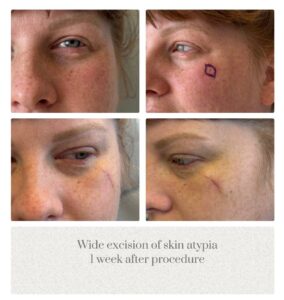As a plastic surgeon, I spend a lot of time thinking about stitches. It may seem simple, but the type of suture I choose can shape how a wound heals, how a scar looks, and how predictable the final result becomes. I wrote this guide because many patients ask why I select one technique over another—and I truly enjoy helping people understand the “why” behind their care.
At Oregon Cosmetic and Reconstructive Clinic, I always aim for gentle tissue handling and thoughtful closure techniques. These small decisions make healing smoother and help create reliable results.
What Are Dissolvable Sutures?
Dissolvable sutures are made from materials that your body naturally breaks down over time. I use them in layers underneath the skin. On the face, these layers may include:
-
The fat layer
-
The deep dermis
-
The dermal–epidermal junction
Because these stitches sit under the skin, they stay hidden. This buried technique keeps the surface of the skin smooth as it heals. It also reduces irritation and redness, which supports better early scar appearance.
Pros of Dissolvable Sutures
-
No stitch removal needed
-
Less surface inflammation
-
No hatch marks on the skin
-
Support from multiple internal layers
-
Helpful for delicate areas like the face
These benefits play an important role in many facial procedures, including those discussed in our Facial Plastic Surgery section.
Cons of Dissolvable Sutures
-
Occasionally take longer to break down
-
Rare small “suture spits” if a knot pushes up
-
Not always strong enough for high-tension or high-movement areas
Even with these limitations, dissolvables often work well for areas where I want the skin surface to stay undisturbed during healing.
When Permanent Sutures Are the Better Choice
There are times when permanent stitches on the skin surface offer the safest and most predictable result. I use them when:
-
The skin is fragile
-
I need stronger support to hold edges together
-
The area moves a lot
-
The wound tension is high
Surface stitches can create more inflammation, but they allow excellent precision. When removed early, the chance of hatch marks stays low.
Timing Matters: When I Remove Surface Sutures 
-
Face: remove at 7 days
-
Hand: wait at least 2 weeks because hand skin moves more
How I Choose the Right Method for You
Every wound is different, and I enjoy tailoring my approach. I consider skin quality, incision location, wound tension, movement, and how the deeper tissues align. My goal is always to help your skin heal smoothly and predictably.
If you want to explore more topics like this, you may enjoy our guides on:
These pages explain how I use careful techniques to support good outcomes across many different procedures.

